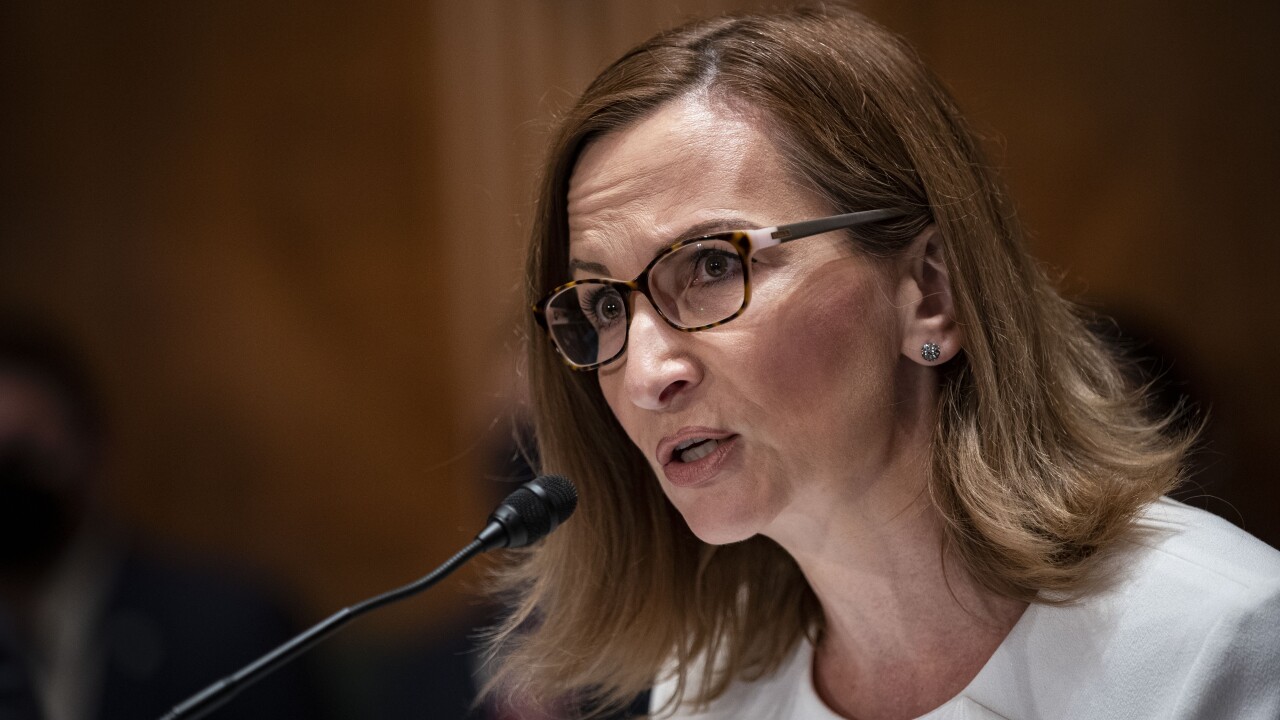When FDIC examiners paid a scheduled visit to Cindy Dickens last year, one wonders if the team made a wrong turn on its way to Charlotte, NC, and wound up in the far-flung, rural Dallas exurb of Farmersville.
Why else would they be discussing the do's and don't's of electronic document management with the svp and compliance officer of a $93 million bank, instead of a larger bank like Bank of America or Wachovia?
"I'm not going to say they are pushing us in that direction," laughs Dickens of First Bank of Farmersville, about her bank's high-tech installation. "But they want to make sure that banks that do implement document management have a comfort level with the [provider], and that they take measures to make sure the people you employ know the documents you're scanning."
A small bank whose size might barely justify investments in passbook technology might not seem the natural market for electronic content management (ECM) firm Systemware, which counts BofA, American Express and Northern Trust among its clients. But as the tentacles of federal compliance reach further downstream into the community banking market, Systemware went down market with an ECM solution tailored to that niche.
First Bank deployed document management-or more precisely, the first phase of the system-in order to create electronic versions of customer signature cards giving remote access to tellers and auditors in branches. The data is tied to corresponding CIFs, which will eventually be computerized and imaged to replace the bank's overflowing mountain of paper.
Systemware's Centraspect FS, a content management solution for the community banking tier, is one of several initiatives introduced or reconfigured by ECM vendors geared for solving compliance issues with banks (and other industries). Besides having rooms and costly off-site leasing facilities crammed with cardboard boxes, these clients also have stomachs twisting in knots over meeting Sarbanes-Oxley, Gramm-Leach-Bliley, BSA/The USA Patriot Act, Basel II, CRA, anti-money laundering and HMDA, among other regulatory edicts.
"The Patriot Act and Gramm-Leach-Bliley really don't make any distinction as far as the bank's size is concerned," says Al Griffin, director of product planning for Systemware. "What we found at Bank of America, quite frankly except for the volumes involved, was no different than what we found at First Bank, Farmersville-a customer information profile that's a requirement of the Patriot Act."
"With the community banks, there is a fear factor of compliance," says Systemware marketing vp Frankie Basso. "One of the reasons we felt that our expertise with the large banks really translated well is we have a lot of experience in enabling regulatory compliance. If we can do it for the large folks, then it gives you a lot of credibility when you go down market."
Compliance needs have become a major driver for ECM clients. In January, FileNet launched its new Records Crawler product that adds a rules-based capture and management solution for records at the file-system level. Vignette, a firm rooted in records management, is jointly marketing a new Sarbanes-Oxley application with Certus Software that creates a lifecycled repository of compliance data that can be excised when no longer needed.
The ECM space is a fast-growing but fledgling field of various players who evolved from specialties in Web content, storage and records management solutions into scalable system-wide applications. Forrester Research last year stated ECM sales across multiple industries would outpace the overall software market growth through 2008, at an annual growth rate of 19 percent. Gartner has previously predicted that 75 percent of Global 2000 companies will have some enterprise content management implementation by 2008.
Compliance will remain one of the top factors for deployment. Matt Sullivan, who heads IT service company Kanbay's risk management and regulatory compliance practice, says banks face increasingly complex and sometimes conflicting guidelines. While heavy fines are being levied at banks that violate the Bank Secrecy Act's anti-money laundering, for example, institutions are also being prodded by examiners to lay off the suspicious activities reports they are filing in record amounts. "Basel II is sort of the worst case from our regulatory point of view, in terms of having clarity," says Sullivan. Among other examples of new compliance needs winding into financial services are the NASD requirements for submitting financial data and the Securities and Exchange Commission's Reg FD (Fair Disclosure).
"Deregulation of all these different businesses has [also] caused them all kinds of conflict of interest rules in the GLB realm," says Bruce Milne, senior director of product marketing for compliance solutions at Vignette, which provides ECM to JPMorgan Chase, Royal Bank of Scotland and Scotiabank. "For example, you're an insurer for life and annuity products and a retail bank. The information from all those combined records [in-house] in some cases must be kept separate. In some cases, they can be combined for cross-selling and up-selling."
ECM can provide an institution with an immutable records system that can prove state/church walls remain intact, or that a product on the Web site was presented properly to a customer (especially important in selling insurance products, to showcase they were not marketed as savings products).
That reflects how ECMs can be used in cross-muted into areas outside of compliance. Vignette's SOX tool, for example, has been utilized for non-corporate governance by a solvents company that needed a document verification system ensuring employees kept up with safety materials.





